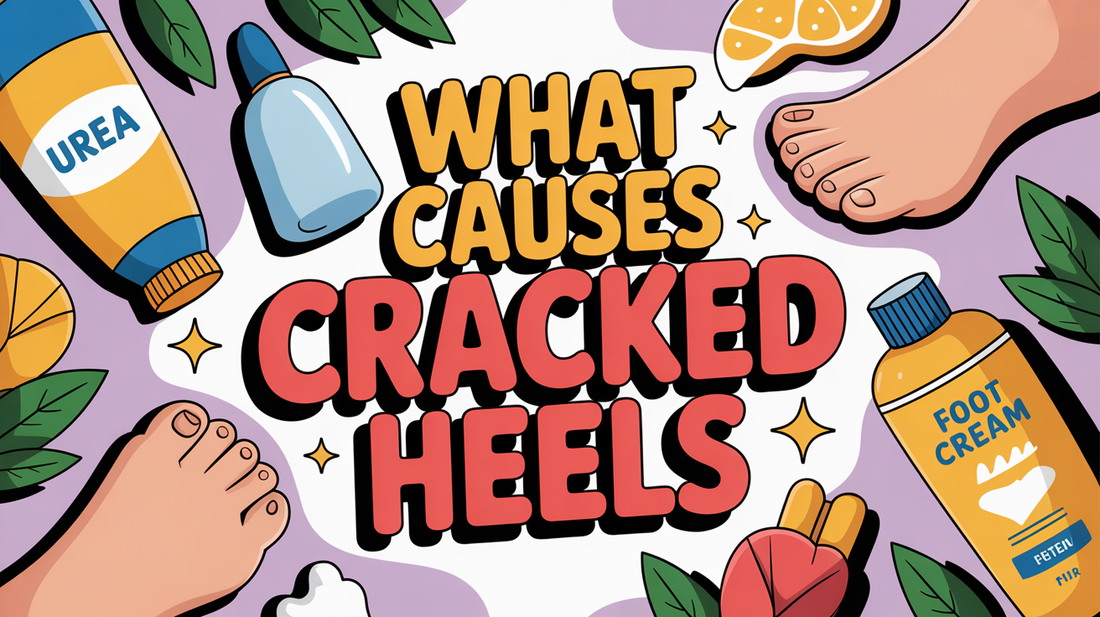What Causes Cracked Heels
what causes cracked heels, cracked heel triggers, reasons for dry heels — Cracked heels are a common issue caused by various factors that lead to dry, painful skin on the feet. Understanding what causes cracked heels, along with the triggers and reasons for dry heels, can help in finding effective solutions. This post is organized into three clear sections based on current research to help you take action tonight.
The Most Common Causes of Cracked Heels 🧭
Cracked heels often develop when the skin on our feet becomes excessively dry, losing its natural flexibility. This condition can lead to painful fissures that may hinder daily activities. The most common underlying causes include certain medical conditions that impact skin health, such as diabetes and eczema, along with the natural aging process. As we age, our skin can lose elasticity and the ability to retain moisture, making us more susceptible to dryness.
Additionally, prolonged standing or walking on hard surfaces can increase pressure on the heel area, contributing to the development of cracks. Poor foot hygiene and moisturizing routines can allow dead skin to accumulate, further exacerbating the issue. Lastly, some individuals may have a genetic predisposition to dry skin, which can influence overall skin barrier function.
- Medical conditions like diabetes, eczema, and hypothyroidism can affect skin moisture.
- Aging reduces skin elasticity and moisture production.
- Prolonged standing on hard surfaces increases pressure on heels.
- Neglecting foot hygiene can cause dead skin buildup.
- Genetics may play a role in predisposition to dry skin.
Try It Tonight: Calm, Fresh Feet ✨
- Wash feet with warm water and a mild cleanser; dry thoroughly between toes.
- Apply a small amount of Kissable Feet where needed; massage until absorbed.
- Let skin breathe; consider wearing breathable socks if desired. Patch-test first if new to this foot cream.
Lifestyle Habits That Make Cracks Worse ✨
Everyday habits can significantly worsen existing heel cracks or speed up their development. For instance, wearing open-back shoes or flip-flops exposes the heels to environmental drying, which can lead to further dryness. Taking long, hot showers is another common practice that strips away the skin's natural oils, leaving it vulnerable and dry.
Using harsh soaps or aggressive foot scrubs can over-exfoliate the skin, damaging the barrier that protects against moisture loss. Additionally, ignoring early signs of dryness and failing to moisturize regularly can lead to more pronounced issues. Sudden weight gain can also increase pressure on the heel area, exacerbating cracks and discomfort.
- Avoid open-back shoes to protect heels from environmental drying.
- Limit long, hot showers to preserve natural skin oils.
- Choose gentle cleansers over harsh soaps to prevent damage.
- Moisturize consistently to combat early signs of dryness.
- Manage weight to reduce added pressure on heels.
Why We Recommend a Gentle Helper 🌿
Kissable Feet is designed for quick absorption and provides a soothing, non-sting feel. This nurse-crafted blend incorporates tea tree, coconut, and calendula to offer comfort while ensuring a clean finish, making it easy to integrate into your nightly routine.
- Fast-absorbing comfort with a non-greasy finish.
- Gentle sensation suitable for sensitive, overworked feet.
- Clean, bedtime-friendly scent enhances relaxation.
How to Address the Root Cause and Prevent Recurrence 🔍
Treating and preventing cracked heels effectively means addressing both immediate symptoms and the underlying causes with consistent care. Establishing a daily foot care routine is essential—this includes gentle cleansing followed by the application of thick, urea-based moisturizers. Managing any underlying health conditions, such as diabetes, through medical care is also crucial for maintaining skin health.
Choosing supportive, closed-toe footwear with sufficient cushioning can help mitigate pressure on the heels, while avoiding walking barefoot on hard surfaces protects the feet. Utilizing pumice stones or foot files gently can aid in removing dead skin buildup, followed by immediate moisturization. Staying hydrated and maintaining a balanced diet rich in vitamins A, C, and E can also support healthy skin function.
- Establish a daily foot care routine with gentle cleansing.
- Manage health conditions like diabetes to support skin health.
- Opt for supportive footwear to reduce heel pressure.
- Gently use pumice stones to remove dead skin and follow with moisturizing.
- Stay hydrated and eat a balanced diet for skin nourishment.

